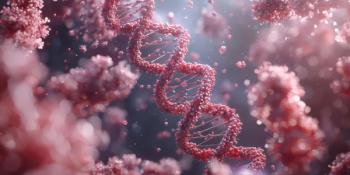
Protein Modification Could Lead to Cancer Progression
Overexpression of Aurora Kinase could potentially inhibit a tumor suppressing gene.
A modification called phosphorylation made to the protein RUNX3 could potentially promote cancer progression, a recent study found.
“This study identifies a new post-translational modification to RUNX3, which provides RUNX3 with a novel role in the regulation of cell division," said first author of the study Linda Chuang, MD. “Our results suggest that frequent overexpression of
RUNX3 is a tumor suppressor gene that prevents tumor formation by binding to DNA. This blocks the cell division that is essential for cancer.
Phosphorylation is the addition of a phosphate group to a molecule and is carried out by Aurora Kinase, according to a study published by Proceedings of the National Academy of Science. In certain cancers, this enzyme is present in high levels.
Phosphorylation prevents RUNX3 from binding to DNA. The protein then relocates to centrosomes, which control the beginning of cell division.
"Unlike other modifications which stem from changes to the RUNX3 DNA itself or how DNA is read, phosphorylation does not accompany any changes in the DNA and is hence undetectable at the genetic level," concluded the study’s senior principle investigator Yoshiaki Ito, MD, PhD. “Given that modifications such as phosphorylation are likely to be impermanent and reversible, the clinical implications are far-ranging. Moving forward, the team is looking into ways to assess the feasibility of enhancing RUNX tumor suppression or inhibiting RUNX mitotic function to kill rapidly proliferating cancer cells.”
Newsletter
Stay informed on drug updates, treatment guidelines, and pharmacy practice trends—subscribe to Pharmacy Times for weekly clinical insights.


















































































































































































































